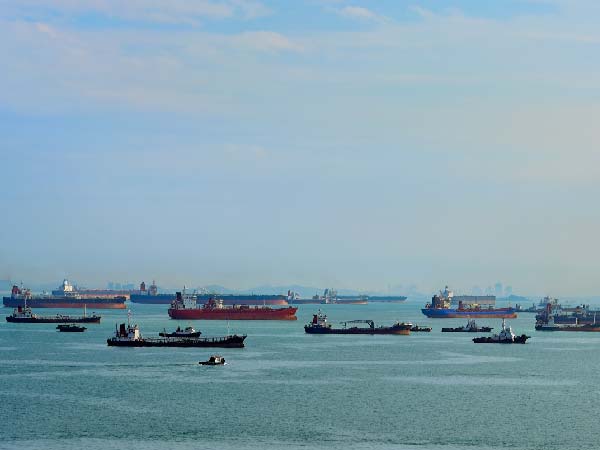At the moment, shipping costs are extremely high and somewhat volatile, and managing freight and logistics costs is a particularly important consideration for all businesses. Organisations have already been forced to improve their logistics management during the Covid-19 pandemic, and the agility they have created will remain essential for managing these costs, and as lockdowns continue to create port closures and logistics disruptions.
The current logistics environment
Freight rates have been rising throughout 2021, to the extent that some routes have increased by 596% in one year and some container routes are over $6,000 more expensive per container than they were just this April.
These high freight costs are making it more difficult for the global marketplace to recover from the earlier pandemic disruption as they mean that although there may be demand for commodities elsewhere, shipping costs mean that stock is effectively trapped in regions of oversupply as it is not economical to transport it.
And although the world is emerging from the widespread and deeply felt lockdowns of 2020, local coronavirus restrictions still apply, and can come into force quickly and unexpectedly, leaving organisations needing to pivot rapidly. These problems are brought into focus by data on average delayed days from China to Europe, which rose from below 1 to almost 2 in March 2020, but have remained even higher at above 2.5 days throughout 2021.
Freight costs and disruptions are also leading to buyers exploring new solutions including larger retailers chartering their own vessels instead of paying by the container. Commodities firms can follow their example by exploring whether they can also innovate or find creative solutions to the supply chain challenges. This environment presents an opportunity for firms with strong logistics capabilities to capitalise on their expertise and make themselves a supplier of choice.
Many commodity prices are set to continue rising through 2021, which is bad news for procurement and manufacturers but could mean that international transportation becomes more feasible despite the costs. Of course, with higher costs all round, risks also increase so commodities organisations will need to ensure they have the appropriate risk management and hedging tools in place, as well as the market, position and logistics data to assess when are where the opportunities are.
Commodity Management: CTRM + Logistics
The latest challenges in logistics only highlight the need for commodity management technology, which has been growing out of and away from the CTRM space for some years. Where the older CTRM systems were centred around risk management and hedging, commodity management incorporates all the functions involved in commodity trading – managing and automating operational risk, contracts and invoices, and, crucially, logistics.
By bringing all your teams and data together, a commodity management system such as Gen10’s CommOS offers a wide range of benefits, including providing this data to all the teams who need it in real-time so that your people can make better-informed, faster decisions.
Bringing all this data together allows your team to understand the physical and operational risks, integrate your real-time trade finance situation and manage your operations so that your team can better manage your physical cargoes.
CommOS can also help your teams accelerate contract processing by providing greater agility through both data visibility and automation. For example, with the complete visibility into all stock and locations, if a port closes or country goes into lockdown, your people can check at a glance which vessels are affected, and the contracts they are associated with. This means that they can take swift remedial action, from operations teams reallocating and rerouting to front office teams renegotiating and providing assurance that you are managing the situation.
Commodity management also helps with day-to-day logistics activities, both for your own goods and any tolling you carry out. Warehousing, including support for LIFO or FIFO allocation strategies, is straightforward, as is multimodal transportation, with automatically-calculated weight and packaging conversions. There is also the ability to manage damaged goods, write-offs and returns.
Logistics automation
Because your logistics are managed in the same system as your contracts, commodity management offers significant opportunities to automate tasks and documents. For example, shipping documents can be populated in one click based on the information that has been used to create the contract and during the allocation, reducing the risk of human error during document creation.
Automated workflows then progress operations and documents through your pre-determined processes, such as sending documents to the appropriate approver, and preventing further action until approval is granted. Automation can also populate tasks in individual and team calendars, such as calculating 10 days before a vessel is due to arrive in port and creating a calendar task to send the Ocean Bill of Lading.
The automation features also include operational risk checks such as alerting system users if they are attempting to assign the wrong grade to a contract or assign a quantity that is out of tolerance. The ability to simply split or combine lots whilst maintaining their associated traceability and data makes this allocation even simpler. Allocations are also made easier by the position visibility that comes from using a commodity management system as operators can see which stock is being held where, its quality information and any documentation or traceability information associated with it, whether it is in the warehouse or in transit.
The sheer amount of data and complete position visibility presented in a commodity management system gives logistics teams greater optionality. They can use the real-time information to optimise shipping and logistics across different transportation methods, manage cost estimates and compare actual costs to budgets, and experiment to ensure they are creating the best allocations for the business. And all of this occurs whilst sharing data with others across the business who need it, so the reporting takes care of itself without interrupting the team’s essential activities.
All of this logistics automation and data comes together to empower logistics staff. They are freed from manual, time-intensive tasks and have more time to create the best allocations. They have access to the information they need to make the best decisions quickly, both in their day-to-day work and when the market moves quickly and they need to respond. And the automated checks and controls mean that they have the freedom to be creative, in the knowledge that they are operating within your agreed processes and risk limits.
Discover more about CommOS and how it can empower your people now.



